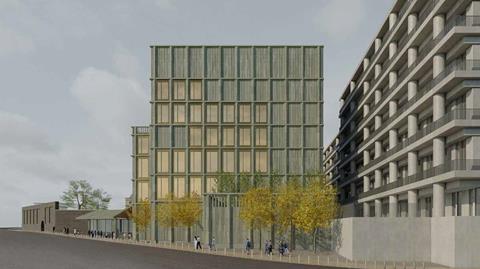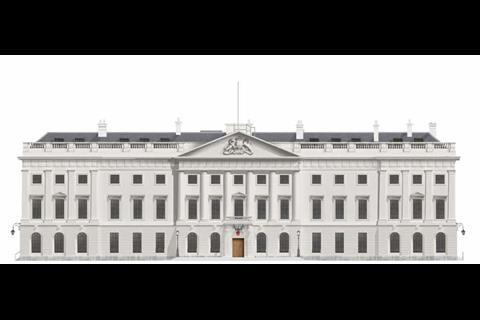Mayor of London confirms he will not call in plans for former Royal Mint site after Tower Hamlets Council’s rejection
Mayor of London Sadiq Khan will not use his legal powers to determine whether David Chipperfield Architects’ proposals for a new Chinese Embassy in east London can proceed, the Greater London Authority has said.
Members of Tower Hamlets Council’s Strategic Development Committee rejected planning officers’ recommendations to approve the scheme, earmarked for the former Royal Mint site at Wapping, at a meeting in December.
Officers had praised Chipperfield’s proposals for the 2.1ha site, north-east of Tower Bridge, as well-designed, and said they would “deliver a high quality, well integrated, inclusive and sustainable place”.
But councillors voted against the project by five votes to three, citing security and safety concerns.
Fears were also raised over the risk of a repeat of the incident at the Chinese Consulate in Manchester in October, when a protestor suffered injuries after being allegedly dragged inside the compound and assaulted by embassy staff.
Tower Hamlets Council referred its “minded-to-refuse” resolution to the London mayor, who could have used his planning powers to determine the application for himself. However a letter from City Hall has now confirmed that he will not do so.

An accompanying report from the GLA said: “Having regard to the details of the application, the matters set out in the committee report and Tower Hamlets Council’s draft decision notice there are no sound planning reasons for the mayor to intervene in this particular case and therefore no basis to issue a direction under Article 7 of the [Mayor of London] Order 2008.”
In addition to safety and security concerns, Tower Hamlets’ draft decision notice on the application cites adverse impacts on heritage – including the Tower of London World Heritage Site, tourism, and increased congestion.
The GLA report noted that government heritage adviser Historic England and Tower of London operator Historic Royal Palaces did not oppose the proposals.
Tower Hamlets has yet to issue a formal decision notice to the embassy development team, which will have a window to appeal the decision.

Chipperfield’s plans include the refurbishment of the grade II* Johnson Smirke Building, by James Johnson and British Museum architect Robert Smirke, to serve as the main embassy building.
Two 1980s buildings on site would be stripped back to their superstructure and redeveloped to provide 225 flats for embassy staff and a “Cultural Exchange” building that would be used for embassy events and visa-processing.
Chipperfield’s proposals also included the partial demolition and remodelling of the grade II Seamans Registry building, designed by Johnson, and completed in 1805. It would deliver ancillary office space for the embassy.
China bought the former Royal Mint site in 2018 with the intention of relocating its embassy from Portland Place.






















1 Readers' comment